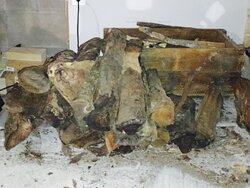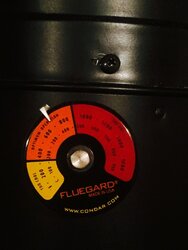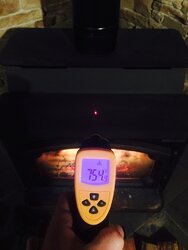so I'm in the long process of learning just how to get my lopi liberty burning just right. We're in our forth day with the stove. And we've come pretty much kept it going since it was installed.
First off I couldn't be happier with the stove. I love it it looks sooo good. My wife and myself find ourselfs just starting at it and fighting over who gets to sitting in the chair in front of it.
So my wife is anumbers girl. She like to have set benchmarks to look for makes her feel more comfortable running the stove. I don't mind just rolling with it watching and judging by the way the stove is acting. What kind of temp ranges should she be looking for on the stove. What kind of temps should we see the stack staying around.
I've been trying to get the stove temp up to 7-800 befor reloading for long slow burns But it's been difficult. I can easily get up to around 6-650. But it seems like it didn't hold that temp very long. I load the stove up as full as I can 6-8 splits and I can get a around 3-3.5 maybe 4 hits of flames and secondary's burning ( secondary's are lazy after the first 2 hours.). Are my splits to small or to big?
First off I couldn't be happier with the stove. I love it it looks sooo good. My wife and myself find ourselfs just starting at it and fighting over who gets to sitting in the chair in front of it.
So my wife is anumbers girl. She like to have set benchmarks to look for makes her feel more comfortable running the stove. I don't mind just rolling with it watching and judging by the way the stove is acting. What kind of temp ranges should she be looking for on the stove. What kind of temps should we see the stack staying around.
I've been trying to get the stove temp up to 7-800 befor reloading for long slow burns But it's been difficult. I can easily get up to around 6-650. But it seems like it didn't hold that temp very long. I load the stove up as full as I can 6-8 splits and I can get a around 3-3.5 maybe 4 hits of flames and secondary's burning ( secondary's are lazy after the first 2 hours.). Are my splits to small or to big?





